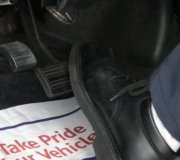The MAP sensor reference was just to illustrate an example of how a sensor can report an incorrect value without setting a fault code. Throttle position sensors actually have very little say in how much fuel enters the engine.
Without a scanner about the only thing I could recommend is propping the throttle open a little so it's off idle, then flexing wire harnesses and vacuum hoses to see if you can get the problem to occur.
Some other thoughts are to ask first at an auto parts store that rents or borrows tools if they have a scanner you can borrow. You want more than the simple code readers they normally use for free checks. Dealers also have some type of flight recorder that can be left with customers for a few days. I never used those when I was at the dealership, but I think they just record the event when you press the button, then it has to be replayed on the dealership's computer.
If there are no fault codes being set, you can make some generalizations. First of all, the problem could be happening too quickly to be detected, or second, it could be a problem in a system that isn't monitored. The fuel supply system is a good example. A drop in fuel pressure will cause stumbling and stalling. I'm fighting that right now with my Grand Caravan and based on observations, I suspect the fuel pump is dieing when it gets warm. The test for that is to drive with a fuel pressure gauge propped under the wiper arm and see what happens to pressure when the problem occurs.
If the surging is an increase in engine speed, that almost has to be due to a vacuum leak. The Engine Computer can command too much fuel based on an erroneous sensor reading, but engine speed won't increase unless there's extra air to go with it. Engine speed WILL increase with extra air with no additional fuel although you won't get a corresponding increase in power. To narrow down an intermittent vacuum leak, use a plastic hose pinch-off pliers or disconnect various vacuum hoses and plug the ports, then drive it to see if the problem occurs. The large hose to the power brake booster is a good place to start but you won't have power brakes. You'll need both feet to stop in a hurry.
Getting back to those fault codes, a glitch in a sensor reading, when it goes outside the 0.5 to 4.5 volt range, will set a fault code immediately. It's when the code relates to the RESULTS of a problem that it can take a while to set. If you did indeed have an intermittent vacuum leak, the likely code would be "running lean too long". You don't know why, you just know what the computer is unhappy with. One of the criteria to set that code is time, and the intermittent problem may not act up long enough to set that code. That would show up though by watching the readings from the oxygen sensors. They typically bounce between 0.2 and 0.8 volts a couple of times per second. Too much air will cause it to hang around 0.2 volts longer than normal.
Thursday, March 22nd, 2012 AT 6:26 PM


